|
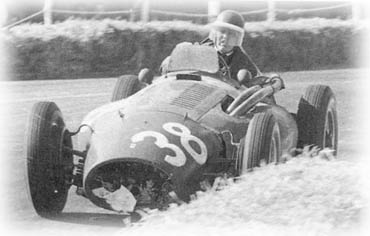 The Spanish Grand Prix, these days relatively early in the season, got off to a flying start back in 1951. The first Grand Prix at Pedralbes, on the outskirts of Barcelona, was the final race of the 1951 season. Before the race there were two contenders for the title: Juan Manuel Fangio for Alfa Romeo and Alberto Ascari for Ferrari. Jose Froilan Gonzales also had a chance, but that required him to win, and set the fastest lap, and Ascari finishing third or less and Fangio not scoring at all. The Spanish Grand Prix, these days relatively early in the season, got off to a flying start back in 1951. The first Grand Prix at Pedralbes, on the outskirts of Barcelona, was the final race of the 1951 season. Before the race there were two contenders for the title: Juan Manuel Fangio for Alfa Romeo and Alberto Ascari for Ferrari. Jose Froilan Gonzales also had a chance, but that required him to win, and set the fastest lap, and Ascari finishing third or less and Fangio not scoring at all.
When raceday had come, Ascari was on pole, with Fangio and Gonzales completing the front row. Ascari led for the first three laps, after which his wrong choice of tyres started breaking up. Ascari struggled while he dropped back further and further. Soon the championship was virtually decided, with Fangio leading and Gonzales a distant second. To beat Fangio, Ascari required either a win or a second place, so the only hope of the Ferrari team now was an early retirement by Fangio, allowing either Ascari or Gonzales to bring the title to Fiorano.
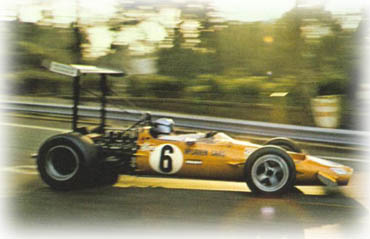 In the end, Fangio and Alfa proved once again they were the best and most reliable team, winning with a lead of almost one minute over Gonzales. Fangio won his first title and Alfa's last, since the Milanese team withdrew from Formula One to concentrate on sportcar racing. In the end, Fangio and Alfa proved once again they were the best and most reliable team, winning with a lead of almost one minute over Gonzales. Fangio won his first title and Alfa's last, since the Milanese team withdrew from Formula One to concentrate on sportcar racing.
At the next Spanish Grand Prix, three years later, Ascari was again the centre of attention. It was the debut of the long awaited Lancia D50 and again the final race of the season. Fangio was long by then the champion in the overpowering Mercedes, so there wasn't a battle for that position going on. Ascari surprisingly set pole before the Ferrari's, Mercedes' and Maserati's. When the race started, the Italian pulled away from the opposition, improving his lead by almost two seconds each lap. Unfortunately for him and Lancia, the win wasn't meant to be. After only nine laps Ascari had to retire with clutch problems, allowing young Ferrari driver Mike Hawthorn to strike his second victory.
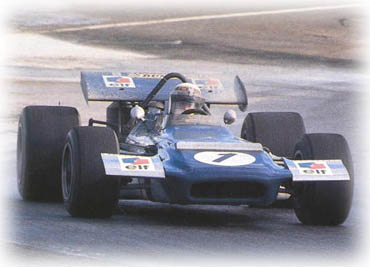 After those two outings to Pedralbes, Spain had to wait fourteen years for Formula One's return. After only one race on the new Jarama track, near Madrid, the circus went to its third Spanish track in 1969. On the street-track of Montjuich Park, located near Barcelona, wings were the talk of the day, with three drivers crashing heavily when their wings collapsed. With wings high above the cars, the construction proved too unstable for both Lotus drivers Jochen Rindt and Graham Hill, as well as Brabham pilot Jacky Ickx. In the end, Jackie Stewart was victorious with the largest lead ever recorded in Formula One. In his Matra, he was more than two laps in front of Bruce McLaren in his self-named car. After those two outings to Pedralbes, Spain had to wait fourteen years for Formula One's return. After only one race on the new Jarama track, near Madrid, the circus went to its third Spanish track in 1969. On the street-track of Montjuich Park, located near Barcelona, wings were the talk of the day, with three drivers crashing heavily when their wings collapsed. With wings high above the cars, the construction proved too unstable for both Lotus drivers Jochen Rindt and Graham Hill, as well as Brabham pilot Jacky Ickx. In the end, Jackie Stewart was victorious with the largest lead ever recorded in Formula One. In his Matra, he was more than two laps in front of Bruce McLaren in his self-named car.
The year after, racing was moved back to Jarama again, but with the same result: Jackie Stewart, this time in a Matra, finished first before Bruce McLaren. This time with a one lap lead. The most remarkable happening of the weekend, however, had nothing to do with the winner. On the first lap, Jackie Oliver drove his BRM into the side of Jackie Ickx' Ferrari, after which both cars caught fire. Ickx barely escaped and sustained burns on hands and legs.
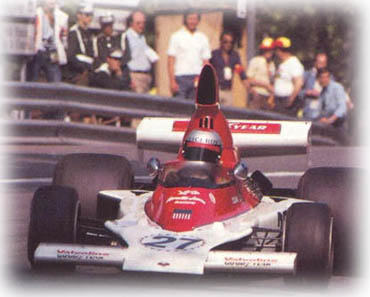 For the years to come, the event switched back and forth between Jarama and Montjuich Park. The last time Montjuich was used, in 1975, started out with drivers protesting against the track's safety. Most drivers didn't even want to start the race, but did so under pressure of the organisers. Both Emerson and Wilson Fittipaldi started the race driving slowly until the point where their starting money was guaranteed and then withdrew. The Brazilians were proven right after 26 laps. German Rolf Stommelen, driving for the Hill team, lost his rear wing and crashed through the rusty barriers, killing four spectators. Shortly after the tragic event the race was stopped and Montjuich Park lost its Formula One race. For the years to come, the event switched back and forth between Jarama and Montjuich Park. The last time Montjuich was used, in 1975, started out with drivers protesting against the track's safety. Most drivers didn't even want to start the race, but did so under pressure of the organisers. Both Emerson and Wilson Fittipaldi started the race driving slowly until the point where their starting money was guaranteed and then withdrew. The Brazilians were proven right after 26 laps. German Rolf Stommelen, driving for the Hill team, lost his rear wing and crashed through the rusty barriers, killing four spectators. Shortly after the tragic event the race was stopped and Montjuich Park lost its Formula One race.
The next year at Jarama, which was now the sole organiser of the Spanish Grand Prix, the new technical regulations messed up the results. James Hunt won clearly in his McLaren, but was disqualified because his rear wing was 18mm too wide. Niki Lauda and Ferrari were handed the win, only to lose it again after McLaren yielded a protest against Hunt's disqualification.
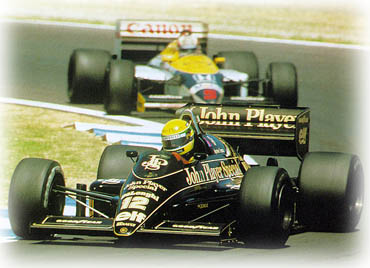 The last race at Jarama, in 1981, proved to be one of the most exciting Spanish Grands Prix ever. Gilles Villeneuve scored his most beautiful win, his Ferrari just 0.2 seconds ahead of Jacques Laffite's Ligier and with John Watson (McLaren), Carlos Reutemann (Williams) and Elio de Angelis (Lotus) within 1.2 seconds distance. Even Enzo Ferrari, usually only to point out it was a driver's job to win, was very impressed, comparing Gilles to his best pilot ever, Tazio Nuvolari. The last race at Jarama, in 1981, proved to be one of the most exciting Spanish Grands Prix ever. Gilles Villeneuve scored his most beautiful win, his Ferrari just 0.2 seconds ahead of Jacques Laffite's Ligier and with John Watson (McLaren), Carlos Reutemann (Williams) and Elio de Angelis (Lotus) within 1.2 seconds distance. Even Enzo Ferrari, usually only to point out it was a driver's job to win, was very impressed, comparing Gilles to his best pilot ever, Tazio Nuvolari.
The Spanish people had to wait five years for another race in their country. When Formula One returned to Spain in `986, this time on the Jerez circuit in the south of the country, the spectators were well rewarded for their wait. Ayrton Senna, then with Lotus, and Nigel Mansell in a Williams, made it one of the closest finishes ever. With ten laps to go Senna finally managed to pass Mansell in the hairpin, as did McLaren's Alain Prost. Mansell thought quickly and determined that this had to do with his worn out tyres. The Briton went in for fresh rubber and came out some twenty seconds behind the Brazilian.
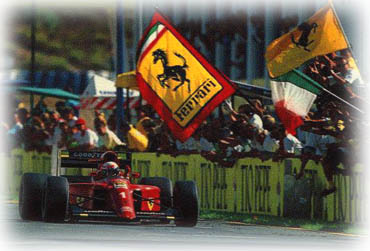 Mansell was proven right on his choice to stop, since he made up as much as four seconds per lap until getting stuck behind Prost. On the final lap he managed to pass the Frenchman for second, with just one and a half second behind Senna. Mansell quickly closed that gap too and the Lotus and Williams raged across the track wheel to wheel for the remainder of the final lap. Mansell accelerated quicker out of the last corner and came next to Senna. When they crossed the finish, nobody knew who had won. The photo-finish had to come up with the winner, which was Senna. The Brazilian had crossed the line 0.014 seconds before the Briton. Mansell was proven right on his choice to stop, since he made up as much as four seconds per lap until getting stuck behind Prost. On the final lap he managed to pass the Frenchman for second, with just one and a half second behind Senna. Mansell quickly closed that gap too and the Lotus and Williams raged across the track wheel to wheel for the remainder of the final lap. Mansell accelerated quicker out of the last corner and came next to Senna. When they crossed the finish, nobody knew who had won. The photo-finish had to come up with the winner, which was Senna. The Brazilian had crossed the line 0.014 seconds before the Briton.
The three who battled that first Jerez race, remained kings in the south of Spain for the years to come, Mansell winning in 1987, then Prost in 1988 and Senna again in 1989, followed by Prost's second Spanish victory in 1990. That last race delivered such a horrendous accident, that the track was immediately taken off the Grand Prix calendar. Ulsterman Martin Donnelly, driving for Lotus, hit a wall during Friday practice, after which the car was virtually disintegrated, leaving the unfortunate driver lying on the asphalt, strapped into his seat. Donnelly had broken almost every possible bone in his body.
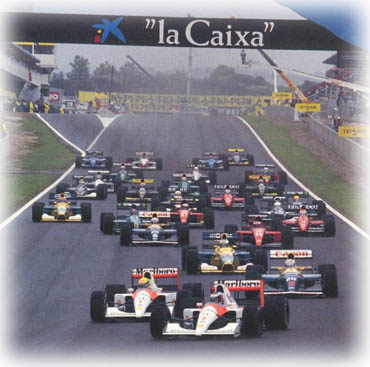 From 1991 on, the Spanish Grand Prix has been held on the Circuit de Catalunya, once again near Barcelona. The new track proved to be a Williams favourite. The British team took home the first four victories with Nigel Mansell winning twice, before Alain Prost and Damon Hill completed the four in a row. After those four years came the years of Michael Schumacher. The German won the next two races in 1995 and 1996, of which the latter boasted world-wide admiration. The German showed his supremacy in the rain by winning with a lead of almost a minute over rain specialist Jean Alesi. This was also Schumacher's first race victory with Ferrari. From 1991 on, the Spanish Grand Prix has been held on the Circuit de Catalunya, once again near Barcelona. The new track proved to be a Williams favourite. The British team took home the first four victories with Nigel Mansell winning twice, before Alain Prost and Damon Hill completed the four in a row. After those four years came the years of Michael Schumacher. The German won the next two races in 1995 and 1996, of which the latter boasted world-wide admiration. The German showed his supremacy in the rain by winning with a lead of almost a minute over rain specialist Jean Alesi. This was also Schumacher's first race victory with Ferrari.
Last year, McLaren was the king of the class at Catalunya and scored an easy one-two, despite of being helped by Michael Schumacher's stop and go penalty. Mika Hakkinen won his third race of the season on the way to the world title on 1998.
Barcelona - Just The Facts:
This will be the 29th Spanish Grand Prix - even though Spain has had only nine Grand Prix drivers in the history of the World Championship before this year.
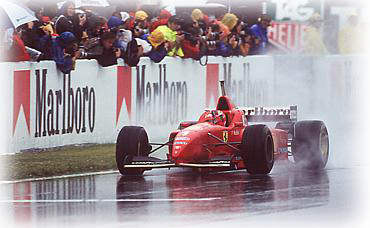 The Circuit de Catalunya is the fifth home of the Spanish Grand Prix, only France has had more venues in Europe. Three of the Spanish Grands Prix locations were in Barcelona: the initial Pedralbes circuit used in '51 and '54 was formed of streets within the city. Montjuich Park in the south of the city was the venue for four GPs from '69 to '75 and the present circuit, to the north of Barcelona, was opened in 1991. Other Grands Prix have been held in Jarama, to the north of Madrid, nine Grands Prix from '68 to '81, and Jerez in Andalucia, where five races were held from '86 to '90.
Williams and Lotus have won the most Spanish Grands Prix with six victories, but both Ferrari and McLaren have won five races. However, watch out for the Prost and Stewart teams; their two team principals have both won three times in Spain. Jackie's wins were in succession, including from start to finish in 1970, while Alain did the same thing in 1988. Only Nigel Mansell has been as successful in Spain - and he formed a one-two with Prost for Ferrari in 1990.
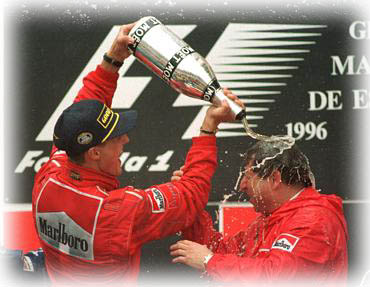 Stewart, meanwhile, holds the biggest winning margins ever, with a two lap win over Bruce McLaren at Montjuich in 1969, while the second smallest winning margin ever was the 0.014s that separated Ayrton Senna from Nigel Mansell at Jerez in 1986. But remember also the 1981 Spanish Grand Prix at Jarama when Gilles Villeneuve brilliantly controlled the pack for lap after lap to lead home a top five covered by just 1.24s.
All the greats have won a Spanish Grand Prix from flag-to-flag: Stewart in '70, Andretti in '77, Mansell in '87 and '92, Prost in '88, Senna in '89 and Michael Schumacher in '95.
Williams hold the record for the most number of front rows with four, while McLaren had started just once from the front row until last year's dominating qualifying performance. Ferrari have held the front row just once, back in 1975, while the former Prost team, Ligier, have also held the front row in Spain.
 Ferrari have had two 1-2 finishes, while Lotus and Benetton have had one each, as have McLaren last year.
This year's event marks Williams' 400th Grand Prix, their driver Alex Zanardi's 30th race and Mika Salo's 70th.
Other potential milestones see Heinz-Harald Frentzen on the verge of 100 World Championship points, while Damon Hill is still four points behind Jackie Stewart's 360 points, the eighth highest scorer of all time.
Mika Hakkinen could start from his fifth successive pole position, already more than he achieved last year.
|










